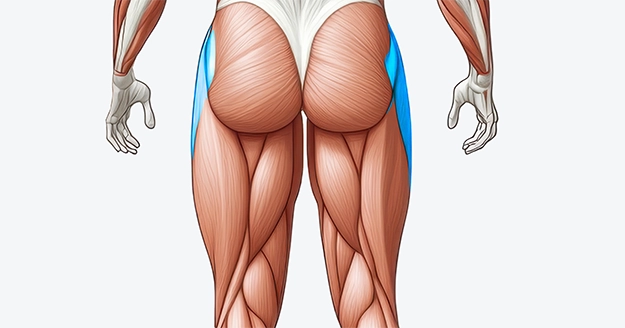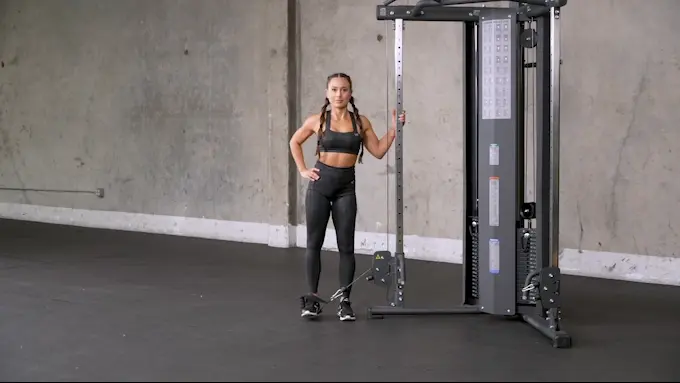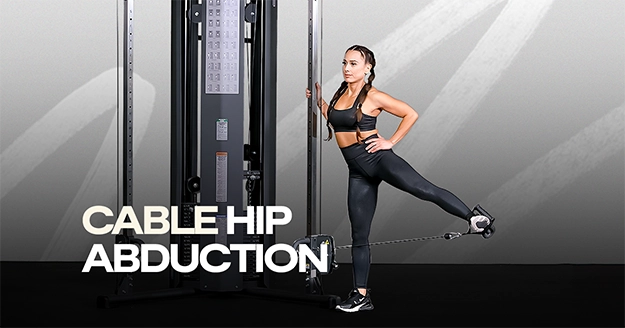Exercise Profile
Cable Hip Abduction Overview
The Cable Hip Abduction is an effective exercise for the hip abductors including the glutes. It’s excellent for strengthening the outer thighs and enhancing hip stability.
For beginners, the cable hip abduction provides a controlled range of motion to focus on form and muscle activation. Advanced athletes can increase the resistance or explore variations like performing the exercise from different angles.
This exercise can be integrated into your lower body routines to build strength and improve hip mobility or added to functional training for enhancing stability and balance.

Cable Hip Abduction Instructions
Step 1: Set the pulley at the lowest setting, attach an ankle strap to the cable, and select your resistance. Stand with the pulley beside you and step your opposite-side foot into the strap.
Step 2: Keeping your legs as straight as possible, lift your working leg out directly to the side as far as possible. Hold briefly, then slowly lower your leg.
Step 3: Repeat the process for the opposite side after completing the prescribed number of repetitions.

Common Cable Hip Abduction Variations
You can use several variations to adjust the difficulty or emphasize different muscles. Here are five popular hip abduction variations to add to your routine:
Cable Hip Abduction Tips
- Only lift your leg as far as you comfortably can.
- Ensure the cable is set at the lowest point to maximize the range of motion and adequately target the hip abductors.
- Avoid using momentum; this ensures you’re targeting the muscles effectively.
- Hip abductions are more about control and precision than brute strength. Too much weight can lead to poor form or unwanted strain on your hips and lower back.
- Exhale as you lift your leg. Inhale as you lower it. Proper breathing will help maintain control and avoid unnecessary tension in your body.
Cable Hip Abduction Common Mistakes
- Leaning to the Side: Leaning your torso to the side while lifting your leg can take tension off the hip abductors.
- Using Momentum: Swinging your leg too fast or using momentum reduces the effectiveness of the exercise.
- Too Much Weight: Too much resistance can compromise form and force other muscles to take over.
Frequently Asked Questions
Where should you feel cable hip abductions?
You should feel this in your abductors or the muscles on the outer side of your thighs and, to some degree, your glutes.
What does hip abduction focus on?
Hip abduction cable exercises focus on your abductor muscles, which are involved when you lift your legs to the side, away from the center of your body.
Can I do cable hip abductions if I have hip pain?
If you experience hip pain, it’s best to consult with a healthcare provider before doing a cable hip abduction exercise. This exercise can help strengthen the hips and improve stability, but ensuring it won’t aggravate any existing conditions is important.
Can cable hip abductions help with injury prevention?
Cable hip adduction and abduction can help prevent injuries, particularly in the knees, lower back, and hips. Strong hip abductors contribute to better stability and movement mechanics.
Post your post-workout selfies in IG and tag @trainestapp, #trainest, or DM them to us to get a shoutout on Trainest Stories!


